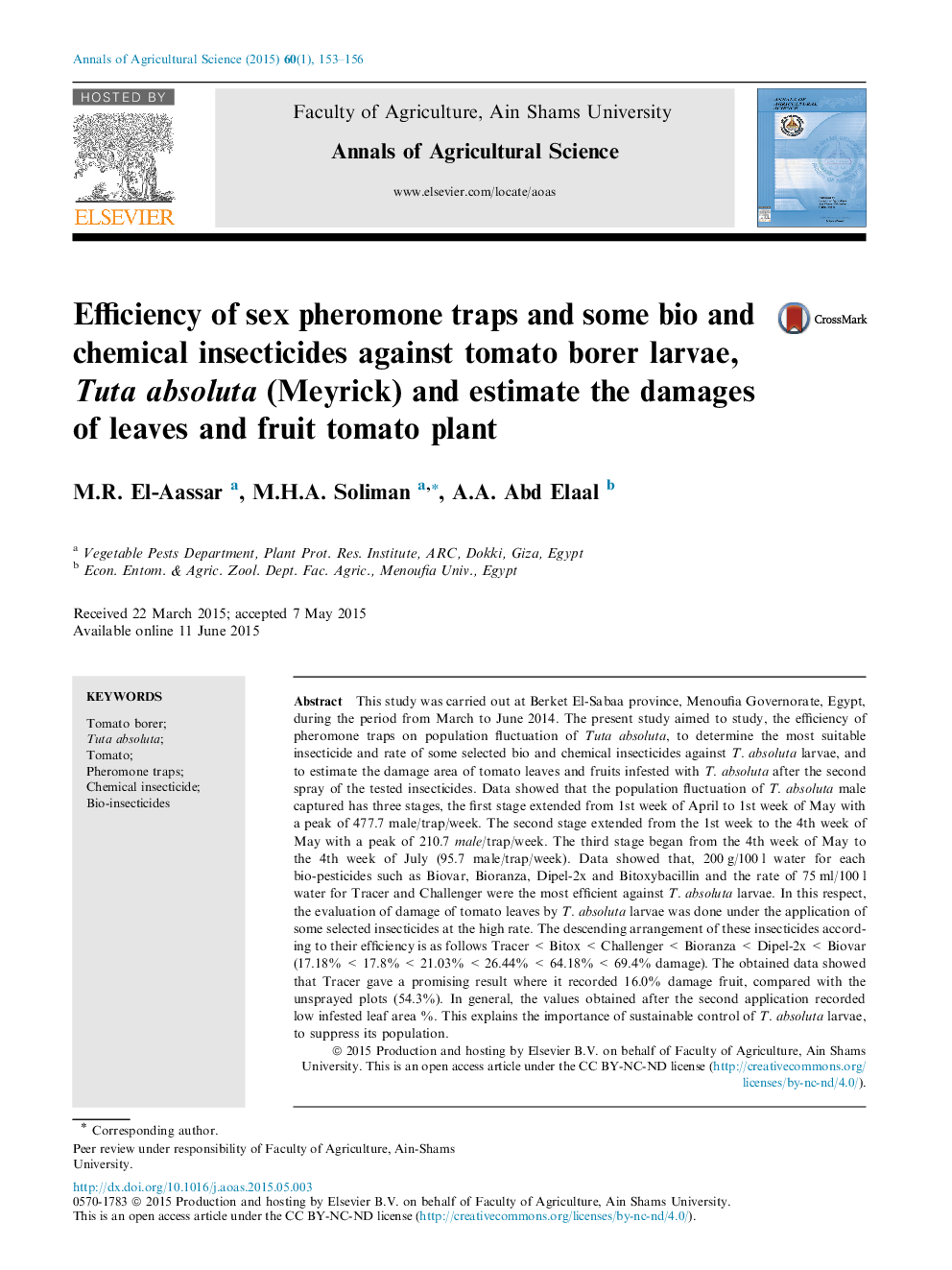| Article ID | Journal | Published Year | Pages | File Type |
|---|---|---|---|---|
| 4492872 | Annals of Agricultural Sciences | 2015 | 4 Pages |
This study was carried out at Berket El-Sabaa province, Menoufia Governorate, Egypt, during the period from March to June 2014. The present study aimed to study, the efficiency of pheromone traps on population fluctuation of Tuta absoluta, to determine the most suitable insecticide and rate of some selected bio and chemical insecticides against T. absoluta larvae, and to estimate the damage area of tomato leaves and fruits infested with T. absoluta after the second spray of the tested insecticides. Data showed that the population fluctuation of T. absoluta male captured has three stages, the first stage extended from 1st week of April to 1st week of May with a peak of 477.7 male/trap/week. The second stage extended from the 1st week to the 4th week of May with a peak of 210.7 male/trap/week. The third stage began from the 4th week of May to the 4th week of July (95.7 male/trap/week). Data showed that, 200 g/100 l water for each bio-pesticides such as Biovar, Bioranza, Dipel-2x and Bitoxybacillin and the rate of 75 ml/100 l water for Tracer and Challenger were the most efficient against T. absoluta larvae. In this respect, the evaluation of damage of tomato leaves by T. absoluta larvae was done under the application of some selected insecticides at the high rate. The descending arrangement of these insecticides according to their efficiency is as follows Tracer < Bitox < Challenger < Bioranza < Dipel-2x < Biovar (17.18% < 17.8% < 21.03% < 26.44% < 64.18% < 69.4% damage). The obtained data showed that Tracer gave a promising result where it recorded 16.0% damage fruit, compared with the unsprayed plots (54.3%). In general, the values obtained after the second application recorded low infested leaf area %. This explains the importance of sustainable control of T. absoluta larvae, to suppress its population.
